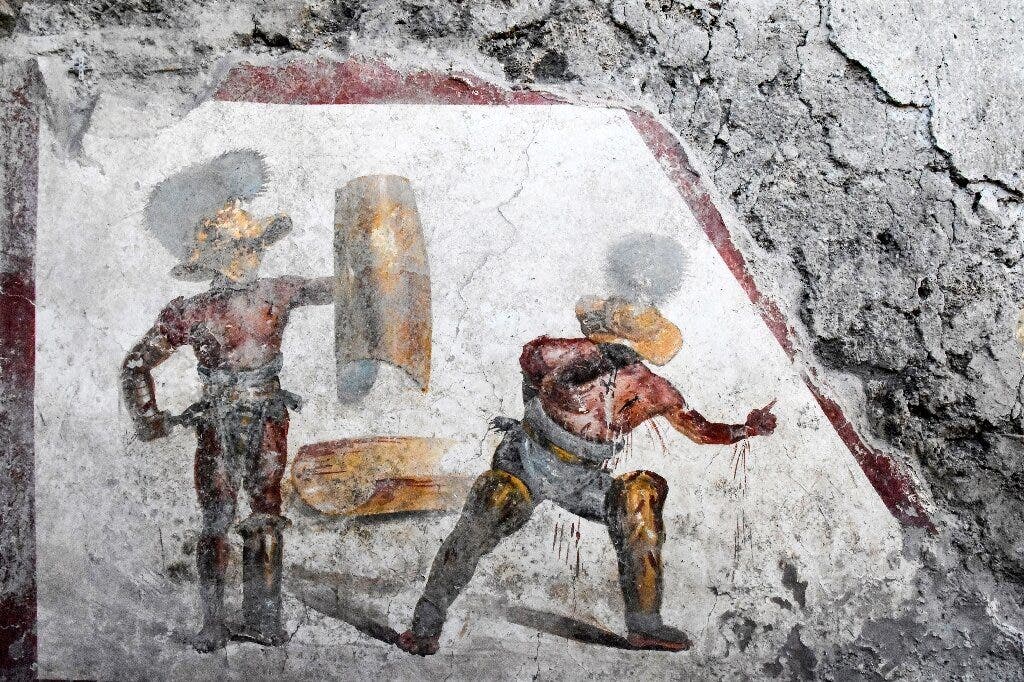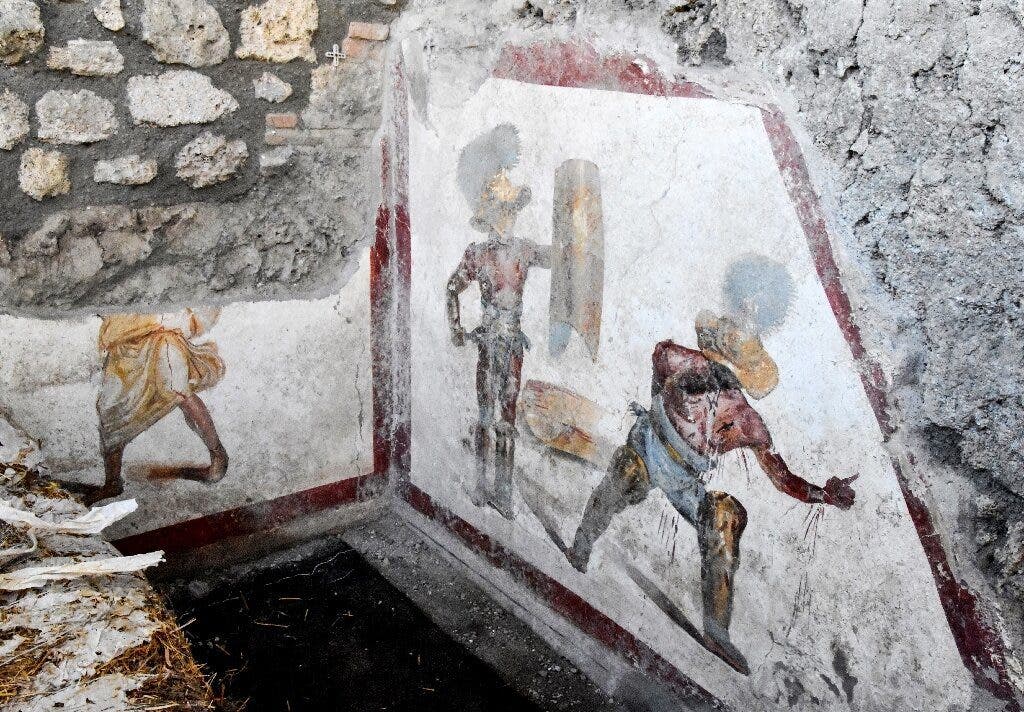
The incredibly well-preserved fresco depicts two fighting gladiators (a murmillo and a Thracian), distinguished by their weapons and armor.
The “Murmillo” fighter wears a plumed helmet with a visor, and is equipped with a classic Gladius sword and a rectangular shield. The Thracian gladiator has a very short sword with a slightly curved blade called a sica, designed to maim the opponent’s unarmored back. The fight seems to be drawing close to an end, as the Murmillo seems to be winning.
“What is particularly interesting is the extremely realistic representation of the wounds, such as the one on the wrist and chest of the unsuccessful gladiator, from which the blood runs, wetting his leggings,” Pompeii‘s director Massimo Osanna said.”The Thraex is gesturing with his hand, possibly asking for mercy,” he said, adding that we don’t actually know how the fight ended.
The fresco was discovered on a wall beneath a stairwell at Pompeii, an ancient Roman city which was destroyed along with Herculaneum by the volcanic eruption of Mount Vesuvius in AD 79. Although the cities were virtually destroyed by the eruption, their architecture was also preserved by a layer of ash and pumice, offering archaeologists a unique glimpse into the life of ancient Romans.

The fresco measures 1.12 by 1.5 meters (3.7 x 5 feet) and lies in what was probably a tavern frequented by gladiators. These taverns would provide both accommodation and serve as a brothel for gladiators.
The building lies close to the well-known gladiators’ barracks in Regio V — an entire quarter designed for gladiators, which yielded impressive archaeological finds (but is still off-limits to the public).

ElfQrin / Wikipedia.Other impressive frescoes have been discovered in the same area: a Roman fast food” counter (or thermopolium) was found in March, and another fresco depicting the mythological hunter Narcissus enraptured by his own reflection in a pool of water was discovered in February. Other findings (including the human remains or a woman and three children huddled together) have also been discovered in the area.
However, what is perhaps the most significant find in the area is an inscription which states that the city was destroyed by Mount Vesuvius after October 17, 79 AD and not on August 24 as previously believed.
It just goes to show how valuable Pompeii is as an archaeological site — it’s been studied for centuries, and it still continues to surprise through its excellently preserved artifacts. No doubt, this is not the last time we’ve heard from Pompeii.






